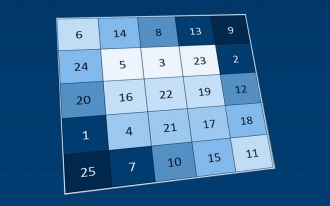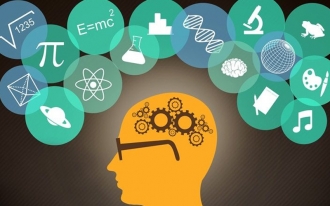- BRAINTRAIN |
- Blog |
- Memory |
- Types of Memory by Purpose and Duration

Bogdan Moroz 18.10.2019 4135 Comments
As the processes of memorizing, storing, and recalling information are highly complex, several classification criteria exist, each characterizing specific properties of these processes. We discussed memory classification in the article “Types of Memory by Information Content,” covering how different data types are acquired, processed, stored, and recalled, as well as the combination of signals from various sensory systems to form a holistic image of an object or event. This article focuses on other, equally important aspects of memorization and their related classifications. As with the previous classification, memory training can improve these metrics for an individual.
Classification by Purpose
Depending on the role a memorization process plays in interacting with the world and accumulating useful information about objects, it is categorized into one of the memory system subtypes.
Declarative (Explicit) Memory
Also characterized as detailed memory, this involves conscious recollections that were deliberately analyzed, organized, and stored for future use. Every person recalling specific events or lessons engages this memory type. It’s a broad system encompassing more specialized subtypes.
Episodic
As the name implies, these memories reproduce specific episodes from a person’s life or events occurring nearby. The detail level is maximal, allowing analysis post-event. This process is akin to short video clips carrying raw information about an event without conclusions or analysis. Improving this memory involves training not only the visual sensory system but all systems contributing to a realistic, complete event image.
Semantic
This is a comprehensive knowledge set about the world, fundamentally different from episodic memory with less detail. Knowledge sources include personal experiences or information from others, forming clear theses about objects or events. These data are stored longer than specific life episodes and can be accessed anytime. It includes not only facts but concepts and meanings, playing a direct role in exploring the world from birth.
Autobiographical
A specific type of explicit memory combining the previous two but focusing solely on autobiographical experiences. It enables self-perception as a personality, encompassing knowledge of one’s character, actions, achievements, and capabilities, while recalling specific life episodes. It serves critical functions for an individual’s existence and social interactions.
Social Functions (Intersubjective):
- Empathy for others
- Predicting others’ actions based on personal experience
- Building relationships
- Sharing personal experiences
- Developing social tolerance or rejection
Self-Awareness of Uniqueness (Existential):
- Recognizing personal uniqueness
- Identifying with a specific culture
- Defining oneself as a personality
- Understanding meaning
- Self-discovery
- Dividing life into periods
- Identity—briefly expressing affiliation by parameters (culture, religion, nationality, politics, language, economic status)
Internal Self-Regulation (Intrasubjective):
- Finding a life path
- Forming self-perceptions
- Independently managing mental state
Procedural (Implicit) Memory
This is an unconscious system for collecting, updating, and storing information. Unlike conscious memory, data here is stored as indescribable images, demonstrable only through examples. Gathered from personal experience, it aids in solving similar tasks later. It includes movement memory, reproduced unconsciously.
Classification by Duration
Based on the time of data collection, activation, and storage duration, several memorization types are distinguished.
Ultra-Short-Term
This memory retains a highly detailed, accurate world image from multiple sensory systems (vision, smell, hearing, touch), but its storage duration is very brief, from 0.1 to 0.5 seconds.
Short-Term
This serves for brief (about 20 seconds) storage of data from sensory systems or long-term memory. It’s then processed by the working memory and sent for longer storage. Short-term memory holds data needed for immediate tasks, initiated minimally by consciousness but mostly unconsciously. After 30 seconds, the trace of recent information is so unstable that minor distractions can erase it. Repetition is needed for longer retention. Its capacity is small, with George Miller’s research indicating 7 ± 2 objects, depending on complexity and individual traits. Recent studies suggest this has dropped to 4–5 images, including people, scenes, objects, concepts, sounds, or events. As clarity and detail vary, each object carries different information volumes. Training short-term memory involves combining more disparate data into one image to hold more information simultaneously. For example, a random letter sequence yields only 4–5 recalled after one repetition, but grouping them into syllables increases recall significantly. Train your memory this way for quick results.
Since 1964, scientists hypothesized that short-term memory relies more on acoustic than visual or other images, with similar-sounding words being hardest to recall.
Long-Term
Unlike prior types, long-term memory stores information not immediately accessible to consciousness, encoded via the subconscious. Semantic images are used, so words with the same meaning are stored as one object, complicating long-term memorization of synonym lists. While previous types have fixed durations, long-term memory data can remain accessible indefinitely with periodic repetition. Healthy sleep significantly aids in consolidating information in long-term storage.
Scientists identify three zones:
- Active – stores frequently used data easily transferred to short-term or working memory, with many repetition cycles.
- Passive – less frequently used data accessed under specific circumstances, like professional skills, languages, or rarely seen people, requiring more recall time and potentially less detail.
- Latent – deeply stored knowledge needing cues for retrieval.
Working
Not short-term, though its storage duration is similar. Its key distinction is that information is active, subject to modifications, cognitive operations, grouping, or decomposition. Existing data from “archives” can be altered through comparison with new data and stored in a new form.
Understanding the full scope of memory information available today makes it clear that this process cannot be viewed in isolation and requires a comprehensive approach. The knowledge gained from these articles will help optimize memory training and deepen understanding of your cognitive processes.




